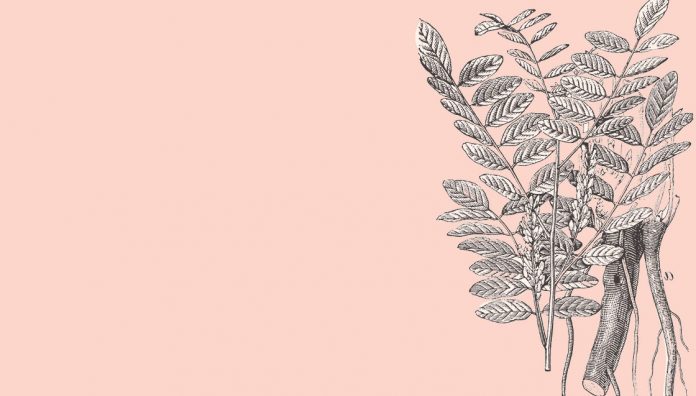Liquorice has been put to varied use since the beginning of recorded history.
Odd as it seems, the liquorice plant is a member of the bean family. But its plump pods, slender green leaves and purple flowers were not what attracted Theophrastus’s attention. It was Glycyrrhiza glabra’s gnarly roots.1
The Greek botanist, pharmacologist and disciple of Plato and Aristotle was the first to study the medicinal properties of liquorice root with ‘scientific’ rigour. Theophrastus set the pace for later generations when he prescribed what he called the ‘Scythian’ root for respiratory problems such as asthma, coughing and vocal difficulties.2
Building on Theophrastus’s work, assorted thinkers from Europe, Syria, Scandinavia, Iraq and England sought to identify the botanical and medicinal characteristics of the plant.2 Unproven traditional therapies flourished – in China and India they were especially strong.3,6
Mechanism of action
Glycyrrhetic acid, the active metabolite in liquorice, inhibits the enzyme 11-ß-hydroxysteroid dehydrogenase enzyme type 2, resulting in a cortisol-induced mineralocorticoid effect and the tendency towards the elevation of sodium and reduction of potassium levels.5
The present
Today, largely unregulated ‘herbal’ remedies – from liquorice drinks to dietary supplements – are sold for uses such as digestive problems, menopausal symptoms, cough and bacterial and viral infections. People even use it as a shampoo.1,3,4
And of course, liquorice snacks are popular, from drops to twists and bars. Tobacco companies use liquorice to flavour cigarettes and vaping products.
Liquorice-laced products are sold legally worldwide. In 2008 the Therapeutic Goods Administration’s Complimentary Medicines Evaluation Committee (CMEC) concluded that herbal preparations containing Glycyrrhiza glabra and its cousin species Glycyrrhiza uralensis were ‘appropriate’.
Recognising the potential for overuse, though, it required this label: ‘Contains liquorice. Not suitable for people with a history of high blood pressure, or who are pregnant, or have kidney disease.’7
While approving the use of liquorice as a food additive, the US Food and Drug Administration did issue a Halloween warning about over-consumption of black liquorice candy.8
The downside
In large amounts and with long-term use, liquorice can cause hypertension and low potassium levels, potentially leading to heart and muscle problems.1 Overuse is also linked to neurological complications, allergic reactions and adverse drug interactions, along with electrolyte and renal abnormalities and even pre-term birth.9 Tellingly, the United States National Institutes of Health says there is ‘insufficient data available to determine if liquorice is effective in treating any medical condition’.8
The upside
Recent research suggests that liquorice components may have some antiviral and antimicrobial activity. The rise of antibiotic resistance and emergence of COVID-19 suggest further exploration is warranted.6,10
In February a Wuhan University trial of liquorice and vitamin C as a COVID-19 therapy was approved.10
References
- National Institutes of Health. National Center for Complimentary & Integrative health. Licorice root. 2016. At: www.nccih.nih.gov/health/licorice-root
- Fiore C, Eisenhut M, Ragazzi E, et al. A history of the therapeutic use of liquorice in Europe. J Ethnopharmacol 2005;99:317–324. At: https://sci-hub.tw/10.1016/j.jep.2005.04.015
- Sidhu P, Shankargouda S, Rath A, et al. Therapeutic benefits of liquorice in dentistry. J Ayurveda Integr Med 2020;11(1):82–88. At: www.sciencedirect.com/science/article/pii/S0975947617305107?via%3Dihub
- com. Natural Products (Pro). Licorice. 2018. At: www.drugs.com/npp/licorice.html
- Omar HR, Komarova I, El-Ghonemi A, et al. Licorice abuse: time to send a warning message. Ther Adv Endocrinol Metab 2012;3(4):125–138. At: http://europepmc.org/backend/ptpmcrender.fcgi?accid=PMC3498851&blobtype=pdf
- Wang L, Yg R, Yuanan B, et al. The antiviral and antimicrobial activities of licorice, a widely-used Chinese herb. Acta Pharm Sin B 2015;5(4):310–315. At: www.sciencedirect.com/science/article/pii/S2211383515000799
- Australian Government. Therapeutic Goods Administration. Complimentary Medicines Evaluation Committee. Extracted ratified minutes. Sixty-eighth meeting. At: www.tga.gov.au/sites/default/files/cmec-minutes-68.pdf
- US Food & Drug Administration. Black licorice: trick or treat? At: www.fda.gov/consumers/consumer-updates/black-licorice-trick-or-treat#subscribe
- Nature Plants. Editorial. Redeploying plant defences. At: www.nature.com/articles/s41477-020-0628-0
- Chinese Clinical Trial Registry. A randomized, open, controlled trial for diammonium glycyrrhizinate enteric-coated capsules combined with vitamin C tablets in the treatment of common novel coronavirus pneumonia (COVID-19) in the basic of clinical standard antiviral treatment to evaluate the safety and efficiency. 2020. At: www.chictr.org.cn/showprojen.aspx?proj=49131



 John Jones MPS, pharmacist immuniser and owner of My Community Pharmacy Shortland in Newcastle, NSW[/caption]
John Jones MPS, pharmacist immuniser and owner of My Community Pharmacy Shortland in Newcastle, NSW[/caption]


 Debbie Rigby FPS explaining how to correctly use different inhaler devices[/caption]
Debbie Rigby FPS explaining how to correctly use different inhaler devices[/caption]




 Professor Sepehr Shakib[/caption]
Professor Sepehr Shakib[/caption]

 Lee McLennan MPS[/caption]
Lee McLennan MPS[/caption]
 Dr Natalie Soulsby FPS, Adv Prac Pharm[/caption]
Dr Natalie Soulsby FPS, Adv Prac Pharm[/caption]
 Joanne Gross MPS[/caption]
Joanne Gross MPS[/caption]








